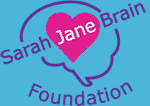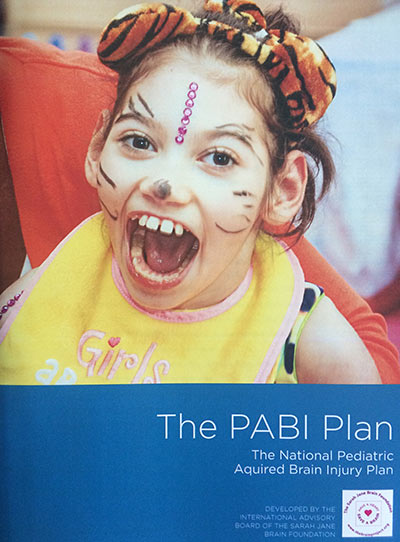The Pediatric Acquired Brain Injury Plan includes as a subset, Traumatic Brain Injury, and strives to create a national structure of coverage along with a standardized system of care.
What is Pediatric Acquired Brain Injury (PABI)?
Pediatric Acquired Brain Injury (PABI) is the #1 cause of death and disability for children and young adults in the United States. There are 2 types of causes:
Traumatic Brain Injury (TBI): falls, sports concussions, blast injuries from war, motor vehicle crashes, violence/assault, child abuse, Shaken Baby Syndrome/ Abusive Head Trauma, gunshot wounds, bicycle accidents, or any other trauma to the brain caused by an external force.
Non-Traumatic/ Acquired Brain Injury (ABI): brain tumors, meningitis, strokes, high fevers, lack of oxygen (such as in near-drowning incidents or due to difficulty breathing after birth), poisoning, ischemia and substance abuse or any other injury to the brain caused internally.
What are the 7 categories of care in the PABI Plan?
Each Category of Care will establish a nationwide standard for collecting translational data, a standard set of training, education and dissemination of information, and the ability to develop and monitor scientific investigative research. These are the 7 categories of Care: Prevention, Acute Care, “Mild” TBI, Reintegration/ Long-Term Care, Adult Transition, Rural/ Tele-Health, and The Virtual Center.
What are the 52 State Lead Centers?
State Lead Centers are a collaboration of networks that provide complete national coverage in their state/territory, region, and Category of Care. Full list of all 52 State Lead Centers in Alphabetical order.
How is the PABI Plan funded?
On July 10, 2011, Congressman Leonard Lance(NJ) along with 50 of his bi-partisan collegues (including former Vice President Mike Pence) introduced House Resolution 2600. HR 2600 would fund a $2.9 billion, seven-year initiative implementing the PABI plan.
Eventually, over 140 bi-partisan Members of Congress co-sponsored HR 2600, however, it didn’t get though.
The path forward is to fund the PABI Plan from 8 federal departments: Health and Human Services (HHS), Education (DoJ), Veteran Affairs (VA), Defense (DoD), Justice (DoJ), Transportation (DoT), Housing and Urban Development (HUD), and Labor (DoL).
What is the PABI Plan?
The PABI Plan develops a seamless, standardized, evidence-based system of care universally accessible for all children/young adults and their families regardless of where they live in the nation.
Who developed the PABI plan?
Over 75 members of the SJBF’s International Advisory Board gathered in New York City from January 8-10, 2009, to analyze the most up to date status of care for Pediatric Acquired Brain Injury.
Because of this effort, the first-ever National Pediatric Acquired Brain Injury Plan (PABI Plan) was drafted and then made public. Experts who developed the PABI Plan included physicians, allied health care professionals, educators, and families.
How will implementing the PABI Plan create over 5,000 jobs for veterans and/or their families?
The overall seven-year budget for the PABI Plan is approximately $2.9 billion. This will create over 6,000 jobs across every state and territory with over 5,000 of these positions designated for veterans or family members of veterans.
Is there a cure for PABI?
The Sarah Jane Brain Foundation’s (SJBF) mission is to prevent, identify, treat, and cure Brain Injury. Although there are no cures right now, hope is never lost.
 JOIN THE REGISTRY
JOIN THE REGISTRY
